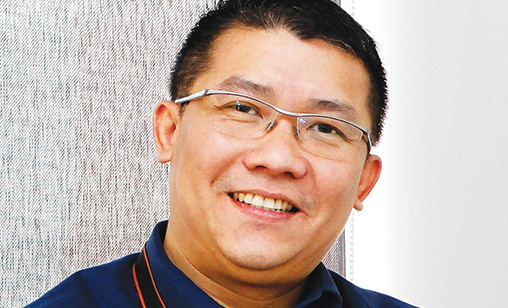News Backgrounder
Destructive capacity war threatens Malaysia’s Firefly
Asia’s turboprop airlines and their jet equipped rivals share a problem of over capacity in the market Firefly CEO, Ignatius Ong, told Tom Ballantyne in Tokyo.
October 1st 2016
Firefly CEO, Ignatius Ong, is full of optimism about his regional carrier’s long-term future, but for now he is putting network expansion on hold. Read More »
“We are in consolidation mode,” he told Orient Aviation last month. “We will maintain our fleet size but rejig some routes. There will not be any new destinations this year.”
 |
The 100% Malaysian Airlines-owned full service carrier operates 18 ATR turboprops, both 72-500s and 72-600s. As part of its present strategy, Ong has postponed the delivery of two ATRs that were due to arrive at the airline this year.
“We have spoken to ATR. Whatever we have ordered from them is postponed for the time being. Whether or not delivery will happen next year will depend on the performance of the market,” he said.
Ong expected Firefly, which focusses on domestic destinations, but also flies to Singapore, Banda Aceh and Medan in Indonesia and Koh Samui, Krabi and Phuket in Thailand, to carry around 2.3 million passengers in 2016, matching the numbers of last year.
There are good reasons for the flattening of the airline’s growth, Ong told Orient Aviation in Tokyo, where he spoke at an aviation safety conference in September.
A weak Malaysian currency, the ringgit, and a slowing economy in Malaysia have contributed to the carrier’s decreased demand, with load factor now averaging between 68% and 75%.
But the biggest reason for the leveling off of Firefly’s expansion is overcapacity in its market sector. Launched in 2007 and initially intended to be Malaysia Airlines budget subsidiary, the carrier had the domestic market to itself for several years.
With hubs at the Sultan Abdul Aziz Shah Airport, Subang, close to downtown Kuala Lumpur, Selangor and Penang International Airport, it has attracted mainly high-end travelers flying between Malaysia’s second and third tier destinations.
Then, in 2013, along came Malindo, 49%-owned by aggressive Indonesian group, Lion Air. Malindo, also a full service airline, quickly threw more ATRs into the market. “They grew really fast, to 11 aircraft. It gave my plans a little bit of a dent,” said Ong.
“I’m not saying no to competition, but they must have a good business plan. At one point, I was at saturation level yet you are telling me you are going to put another 11 aircraft into the market? Has the population doubled overnight?” Ong said.
The capacity war has not gone away. Ong said the situation might be good for the travelling public, but it forced Firefly into offering fares that are untenable. “My competitor and Firefly have to sell tickets at 49 ringgit (US$11.89).
“For crying out loud, it does not make sense, but we have no choice but to compete. There’s no such thing as cost base pricing. If your competitor is going to drop its price, let’s say to 49 ringgit, if I put it at 59 ringgit ($14.32), Malaysians and most Asians will say ‘hey I’m still going to Penang. I’ll save the ten bucks’.
“The other issue is we have a lot of high-end travelers, but they are company travelers and many have a rule of taking the best price on the day.”
In this overheated operating environment, Ong has three major goals. He wants responsible, fair competition where competing airlines are realistic about passenger demand. He also would like the Malaysian government to think of a way to put extra ringgit in people’s pockets.
“The Malaysian public has less money to spend today compared with last year or two years ago. The general public really needs to have another ringgit in their pocket. If they don’t, growth is not going to happen,” he said.
The third factor is stability for the country’s currency. A weak ringgit is making it expensive for Malaysians to travel to Firefly’s international destinations such as Singapore. “So currency is very important. And I would like to make another point. Recently, a journalist said to me: ‘Your flying is predominantly domestic so you won’t be affected by a lower currency’,” Ong said.
“But I am the worst impacted. I am collecting revenue in ringgit and paying my bills in U.S. dollars. The Malaysian economy needs to pick up and competition needs to be a lot more tactical and responsible.”
While no new routes will be introduced this year, the carrier will not drop any destinations. Ong said frequencies will be reduced to destinations that are unprofitable. “If possible, we will develop the routes of good performers such as Penang, Alor Setar, Kota Baru and Johor,” he said.
“We need to make sure we are sizing ourselves correctly and not taking on too much on the back of weak consumer sentiment.” Asked about profitability, Ong said Firefly is “still alright for now… certain routes are profitable. It’s fair to say profitability is tough at the moment in a general sense”.
Despite its full service model, Firefly has been innovative in attracting ancillary revenue, which now accounts for around 10% of the airline’s income. Check-in baggage is free, but only up to 20 kilograms. It sells car insurance. The ATRs are not equipped with ovens so the airline has an arrangement with a food outlet at Subang where passengers can pre-book a meal and eat before they board their flights. Companies can purchase display advertising on Firefly aircraft and the website is designed for shopping.
“Some of these high end travelers buy three phones. I don’t know whether it’s for themselves or for their girlfriends. I don’t care. As long as I can capture a bit of the market and make commission from selling,” Ong said.